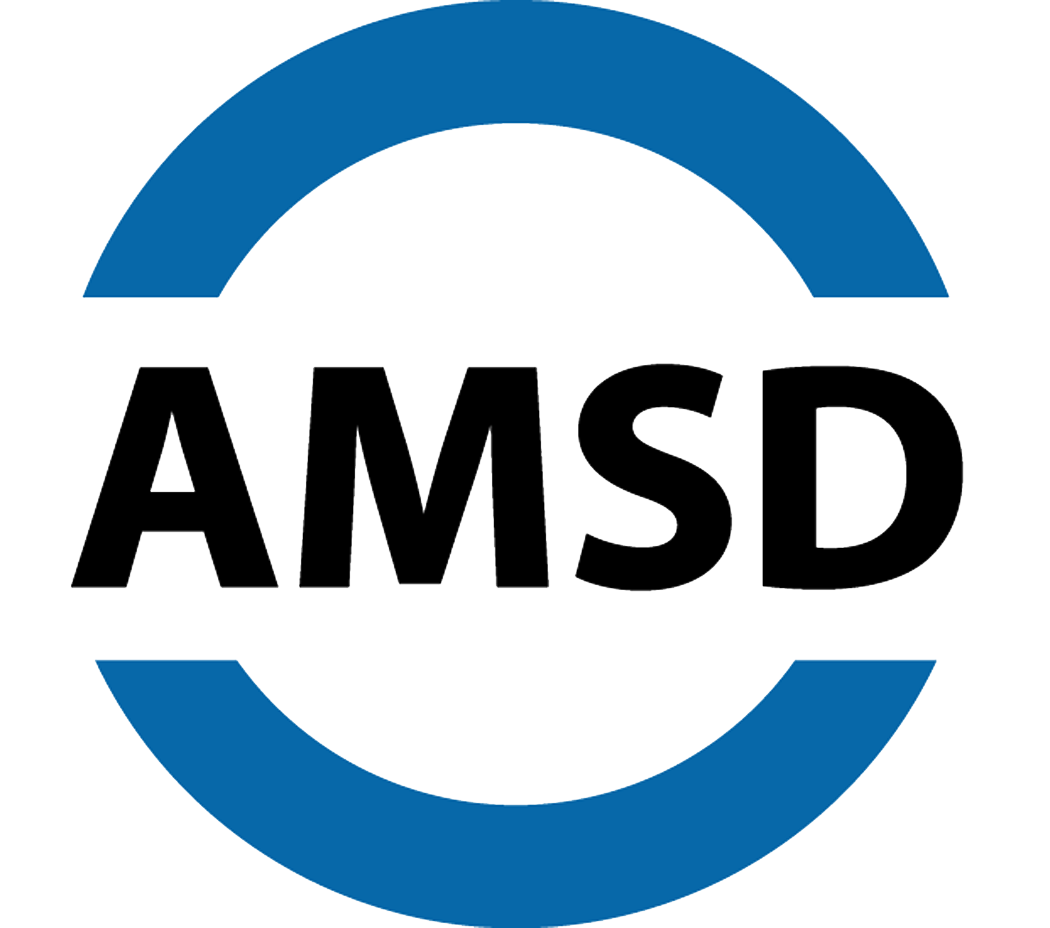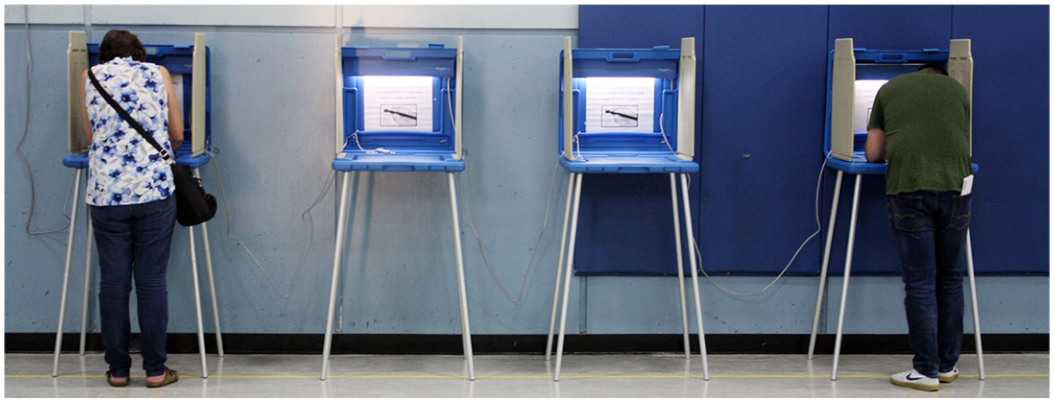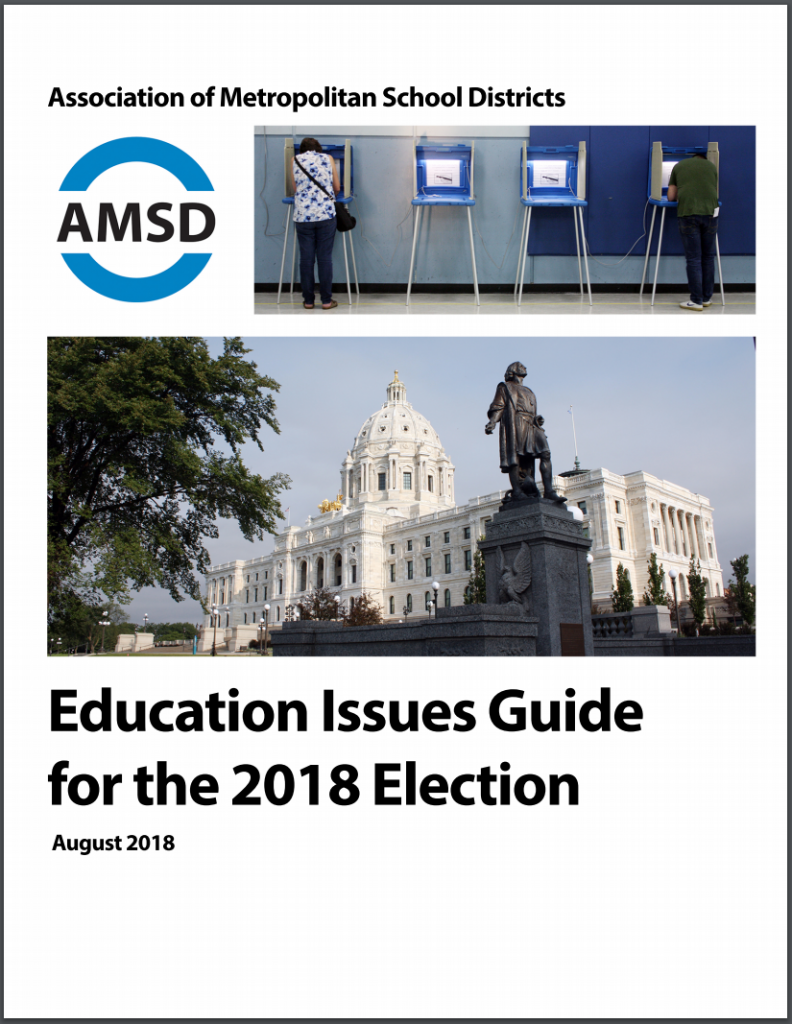The AMSD 2018 Election Guide for Education Issues
This guide details the issues facing k-12 public education in Minnesota and will help you understand some of the challenges facing school districts. This guide:
• Outlines recent legislative action
• Provides information and tools to evaluate candidates’ positions on education issues
• Provides sample questions to pose to candidates to hold our elected officials accountable
A Message from the AMSD Board Chair
Education matters. While those running for office often tout their support for public education, it is critically important to find out where candidates stand on specific policy issues that impact teaching and learning.
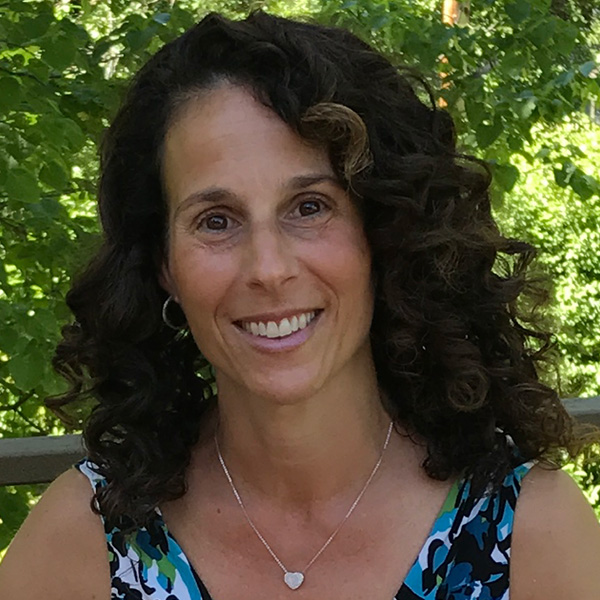
This guide details the issues facing K-12 public education in Minnesota and will help you understand some of the challenges facing school districts. This guide:
• Outlines recent legislative action
• Provides information and tools to evaluate candidates’ positions on education issues
• Provides sample questions to pose to candidates to hold our elected officials accountable
The challenges and opportunities we face in education are both daunting and exciting. Collectively, we are responsible for a high-quality public education system that provides opportunities for success to all of our students. Public schooling is an obligation of the state deemed so important that it is codified in the Education Clause of the Minnesota State Constitution!
Yet, the needs of our students are changing. Think about the challenges facing our schools:
• Increasingly diverse student populations
• Language barriers
• Growing economic insecurity
• Increasing special education needs
Our public education system must continually adapt to educate a workforce in an economy that requires workers who are nimble, lifelong learners and adept communicators. Our future, our kids, our economy and our democracy are all strengthened by a strong public education system.
We encourage you to share this guide with candidates and community members in your district — we hope it will help you understand the expectations that have been placed on our public schools and the critical role policymakers play to ensure every child reaches their full potential.
“If you think education is expensive, try ignorance.” – Derek Bok
AMSD Board Chair Stephanie Levine is a school board member from West St. Paul-Mendota Heights-Eagan Area Schools.
6 Key Education Facts
A standing joke at the Capitol is that there are only about five people in the state who truly understand all of the components and nuances of the education funding system. Unfortunately, that old joke is closer to the truth than it should be. Here are several education facts that shed some light on the funding challenges facing Minnesota school districts. (Click each line to expand information):
The Basic Education Formula continues to lag behind inflation.
Basic education revenue is the primary source of general operating funds for school districts. Between 2003 and 2019, the basic formula has lost ground to inflation. The basic funding formula would be $618 per pupil higher today if it had simply kept up with inflation.
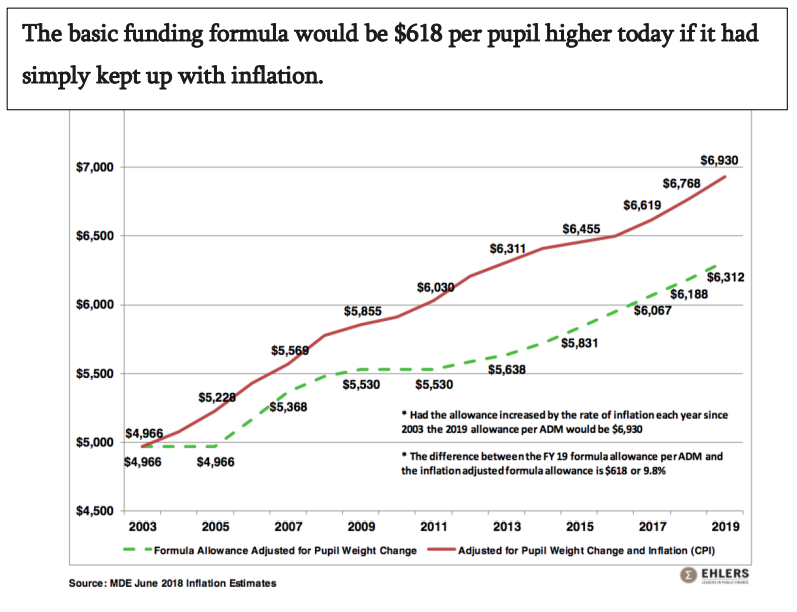
The State Falls Far Short of Paying for Its Special Education Mandates.
In 1975, the federal government passed landmark legislation requiring states to provide a “free and appropriate education to special education students.” This historic legislation ended years of discrimination against students with physical and cognitive disabilities. However, the state and federal governments have never provided the funding necessary to serve our special education students. Consequently, school districts are forced to use money meant for regular classroom instruction to make up the difference. That difference is known as the “cross-subsidy.”
According to the Minnesota Department of Education’s FY 2016 cross-subsidy report (latest data available), special education costs exceeded state and federal special education aid by almost $425 million for AMSD member districts. The statewide cross-subsidy was $679 million in FY 2016 and is projected to grow to $698 million by FY 2017 and $806 million by FY 2021.
There is a common misperception that the cross-subsidy is strictly due to the failure of the federal government to meet its obligation. As the chart below shows, the cross-subsidy is projected to be $272 million in FY 2018 even if the federal government met its goal of covering 40 percent of the cost.
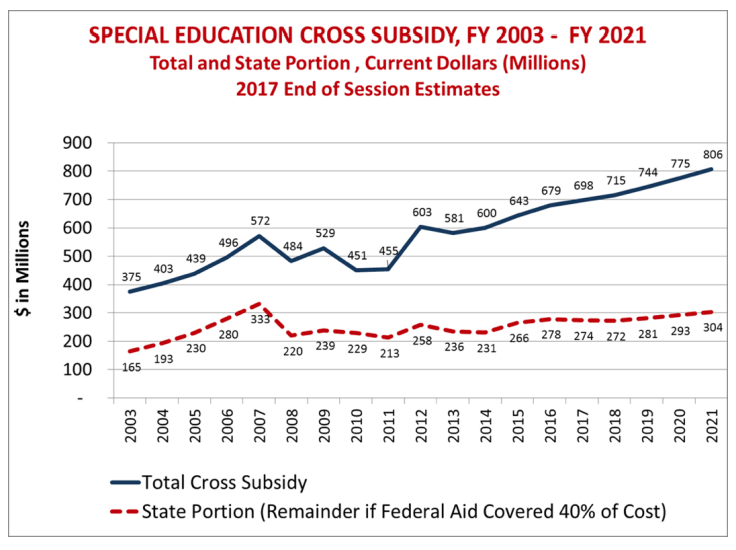
The State Is Not Providing Sufficient Resources to Educate Our English Learners.
According to the Department of Education’s special population report, there were 72,335 students who were eligible for English learner services in Minnesota in the 2017-2018 school year. Almost 70 percent of these students attended school in an AMSD member school district. Statewide, the percent of English learners has increased from 6.5 percent to 8.3 percent since 2003. The statewide number of students who were English learners grew from 3.2 percent in 1997-98 to 8.3 percent in 2017-18 according to the Minnesota Department of Education.
Data from the Minnesota State Demographic Center, finds that 11.1 percent of Minnesotans speak a language other than English at home. Minneapolis Public Schools’ families and students speak more than 90 languages, while more than 125 languages and dialects are spoken in the Saint Paul Public Schools.
In FY 2017, AMSD school districts spent almost $119 million on services for English learners but received just $37 million in English learner funding. In other words, AMSD school districts redirected more than $82 million in general education revenue to provide important services to English learners.
Geographic Operating Cost Differentials.
Metropolitan school districts face significantly higher labor costs than their rural counterparts. Unlike many states, Minnesota’s education funding formula does not recognize the geographic wage differentials.
A 2014 University of Minnesota study showed that there is a 41 percent difference in costs faced by school districts in regions that command the highest and lowest wages.
Consequently, metro school districts are heavily reliant on passing operating referenda to provide basic programs and services for their students. However, these referenda have a widely different impact on local property taxpayers depending on the property tax wealth of the school district.
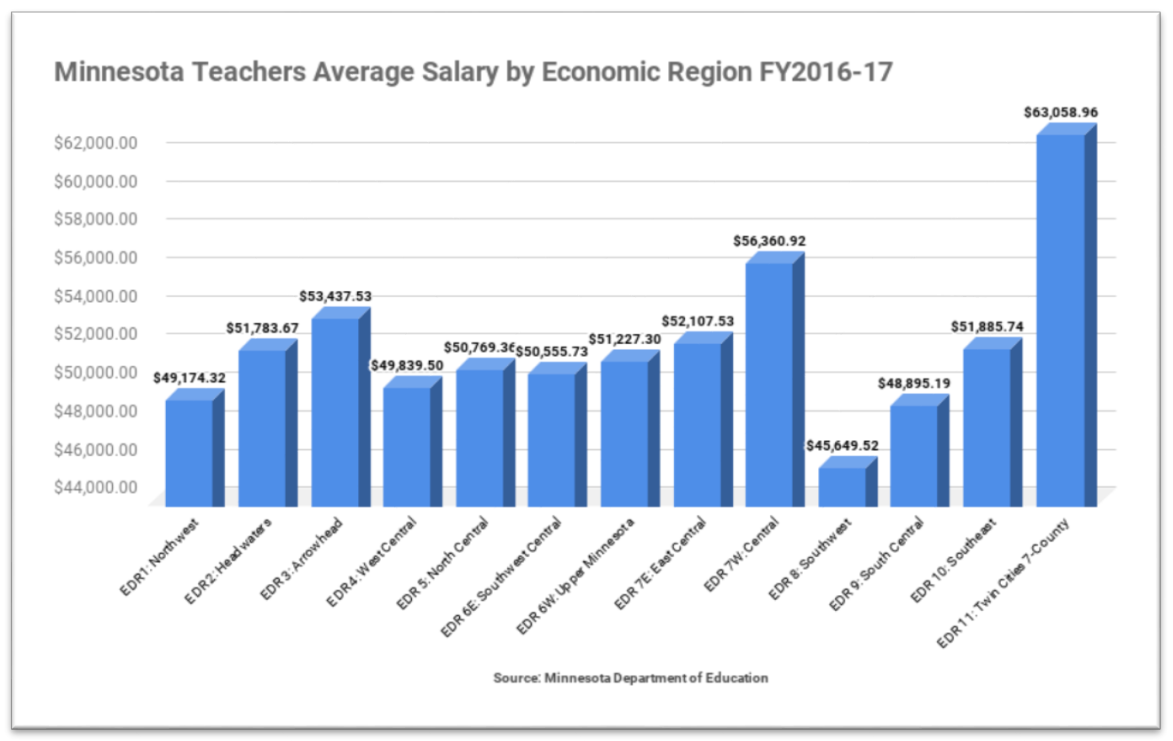
The School Property Tax System Is Inequitable.
Minnesota’s education funding system is based on a state and local partnership to provide the resources and opportunities our students need throughout their preK–12 experience. This is what prepares them to graduate from high school ready for college or career.
Local property taxes provide about 21 percent of the revenue for Minnesota school districts – a level that has been fairly constant for several years. According to the Minnesota Department of Education, the State share of education revenue has risen from 62 percent in FY 2011 to a projected 67 percent in 2021.
Districts rely on school levies just to maintain current programs or to reduce budget cuts. Operating referenda provide resources for basic, essential services and programs for students.
School districts also rely on capital projects referenda to provide the technology their students need in today’s digital world and capital bond referenda to build and maintain safe and secure facilities for students, staff and the public.
Unlike many other states, Minnesota’s education funding system does not account for regional wage variations. As a result, metro school districts, which face significantly higher labor costs, are heavily dependent on voter-approved operating referenda. This reliance creates inequities for school districts, students and taxpayers.
Homeowners who live in comparably valued homes, and who pay similar amounts in property taxes, do not always generate a similar level of funding for their school district. Some school districts generate three and four times more than other school districts due to variations in property tax base. Districts with more commercial/industrial property are able to spread out property taxes and reduce the tax burden on their homeowners. It is vital that the Governor and legislators address funding and property tax disparities.
More Students Have Significant Needs and Challenges Requiring Schools to Provide More Services.
Examples of the growing significant needs facing student populations:
• Economic disparity. Student eligibility for the free and reduced price lunch program is based on family income. For FY 2017-18, a student from a family of four is eligible for the free lunch program if the family income is at or below $31,980 (130 percent of the federal poverty level). A student from a family of four qualifies for the reduced price lunch program if their family income is at or below $45,510 (185 percent of the federal poverty level).
• English proficiency. Students who are English learners or who do not speak English as their primary language often need translation or other resources in classrooms where English is the primary language.
• Homelessness. 2015-2016 was the first year the Minnesota Department of Education started tracking Homeless students for school districts.
• Special education IEPs. Special education students have an Individualized Education Plan (IEP) and receive individualized instruction based on unique goals and objectives.

Questions for Legislative Candidates
As you have the opportunity to meet candidates, AMSD offers questions on topics that can inform your decisions about their positions on education:
Education Funding
• What are your education budget priorities for the upcoming budget session?
• Do you believe the education funding formula should recognize the higher cost of labor in the metropolitan area?
• Do you support increasing operating referendum equalization to address these inequities?
• In the coming year, school districts will be forced to spend almost $700 million of funds meant for regular classroom instruction on mandated special education programs. Will you support significantly increasing special education funding to reduce the cross-subsidy?
Local Control and Working with Local School Board(s)
• If elected/re-elected, how will you work with your local school district(s) to address critical education funding and policy issues?
• Do you support granting levy authority to locally-elected school boards to help stabilize education funding?
• Do you support allowing locally-elected school boards to renew an existing operating referendum by a majority vote of the school board after a public hearing?
• Would you be willing to vote against your caucus’ position if it is in the best interest of your local school district(s)?
• Do you support reducing mandates and encouraging innovation for school districts?
• Do you support allowing locally-elected boards to establish the school calendar that best meets the needs of their students and families?
• Thousands of Minnesota students and families are choosing to opt out of one or more of the high school MCA exams because they do not feel the tests are meaningful. Yet, school districts are held accountable for these test results. Do you support reforming the state assessment system to provide more flexibility for students to take assessments that will more accurately measure college or career readiness?
Vouchers
• Do you support vouchers, expanded tax credits or other taxpayer subsidies for non-public schools?
• Should non-public schools that receive taxpayer funding be required to comply with state mandates, held accountable for how taxpayer dollars are spent and be open to all students?
About Public Education in Minnesota
Federal and state policymakers have established ambitious goals and expectations for our public
schools including ensuring that each and every student is college and career ready upon graduation
from high school.
Facts : Data, enrollment and more
• K-12 Enrollment: 884,852
• 2017 Graduation Rate: 83 percent
• Percent of Students Eligible for Free or Reduced-Price Lunch: 37.2 percent
• Students Receiving Special Education Services: 15.7 percent
• Percent of Students Identified as English learners: 8.3 percent
• Homeless: 1 percent
Expectations for Public Schools
Federal and state policymakers have established ambitious goals and expectations for our public schools including ensuring that each and every student is college and career ready upon graduation from high school.
This is a goal we must strive to reach to ensure Minnesota has the highly educated workforce we need to compete in the global economy.
State policymakers must provide adequate, equitable and sustainable resources so our schools can meet the ambitious goals and expectations they have established including:
• All students are prepared for Kindergarten.
• All students achieve reading proficiency by the end of third grade.
• Achievement gaps are closed among racial and ethnic groups of students, students living in
poverty, and students receiving special education services.
• All students graduate from high school.
• All students graduate prepared for college or career.
Achieving these goals requires a sustained commitment by state policymakers including addressing critical issues such as:
• Increasing the basic formula by at least the rate of inflation each year.
• Providing the funding necessary to deliver important and mandated special education and English learner programming.
• Increasing referendum equalization to address property tax and funding disparities.
• Creating incentives and alternatives to attract and retain teachers of color and teachers in shortage areas.
Recent Education Action
Why is it important to become informed about political candidates in your community? Those who are elected will make critical policy and funding decisions that impact your schools and your community. The following investments and strategic reforms were approved during the 2017 and 2018 sessions:
2018
• Pension Stabilization
The bill provides state funding for the increased employer contribution through the school aid formula. Under the legislation, the Teachers Retirement Association (TRA) Fund’s liabilities will immediately be reduced by $2 billion, the funded ratio will increase to 75 percent (from 70 percent), and the plan will be on a trajectory to be 92 percent funded in 30 years.
• School Safety Grants
$25 million in school safety grants were included in the bonding bill.
2017
• An increase in the basic formula of 2 percent per year.
• $50 million for the creation of a new School Readiness Plus Program for the 2018-19 biennium. This one-time funding can be used for voluntary prekindergarten or school readiness programming.
• An increase of $20.65 million in the 2018-19 biennium for Pathway I Early Learning Scholarships. Pathway II scholarships are frozen at the FY 2017 level.
• $4.9 million for mental health grants to intermediate school districts and cooperatives.
• Investments to address the teacher shortage and increase the number of teachers of color.
• Reform of the teacher licensing governance system and the creation of a tiered licensure framework.
• School districts and the exclusive representative of the teachers are required to negotiate an unrequested leave of absence plan removing the statutory requirement that seniority be the determining factor.
While these were significant accomplishments, important work remains. The basic funding formula continues to lag behind inflation and the special education and English learner programs continue to be severely under-funded. In addition, our school districts continue to depend on revenue from operating and technology referenda for resources needed to provide students basic programs and opportunities needed to succeed.
Additional Resources
See additional resources below including how to get involved, videos, and links to share with fellow constituents, legislators and more.
Get Involved
Where do you start?
• Meet with your superintendent(s).
• Meet with school board members.
• Review the AMSD resources included in this guide.
• Attend community candidate forums.
• When candidates call or knock on your door, ask questions.
• Write or call local candidates and ask them about their position on education issues that
matter to you.
• Become involved with your local Legislative Action Coalition or Parent Teacher
Organization.
• Stay active during the legislative session and contact your local leaders on issues that
impact your school district.
• Most importantly … Vote.
Election Resources
Major Parties
Democratic-Farmer-Labor: http://dfl.org
Independence: http://www.mnip.org
Republican: http://www.mngop.com
Legislative Resources
Minnesota House of Representatives: http://www.house.leg.state.mn.us/
Minnesota Senate: http://www.senate.leg.state.mn.us/
DFL House Caucus: http://dflhouse.com
DFL House Caucus: http://www.house.leg.state.mn.us/dfl/
DFL Senate Caucus: http://senatedflcaucus.com
DFL Senate Caucus: http://www.senate.mn/departments/office_bio.php?office_id=1003
Republican House Caucus: http://www.mnhrcc.com
Republican House Caucus: http://www.house.leg.state.mn.us/gop
Republican Senate Caucus: http://www.mnsenaterepublicans.com
Republican Senate Caucus: http://www.senate.mn/departments/office_bio.php?office_id=1002
Candidate Information
League of Women Voters: http://www.lwvmn.org/
MN Secretary of State: http://www.sos.state.mn.us/
Candidate Filings: http://candidates.sos.state.mn.us
Data, Position Papers and more
AMSD Web Resources
AMSD Legislative Session Information: https://www.amsd.org/current-session/
AMSD Research & Charts: https://www.amsd.org/document-library/research-statistics/
AMSD Recommended Education Reports: https://www.amsd.org/documentlibrary/education-reports/
AMSD Reimagine Minnesota Plan: https://www.amsd.org/reimagineminnesota
AMSD Position Papers on issues including Assessment, Charter Schools, Early Childhood Education and more: https://www.amsd.org/position-papers/
Minnesota Department of Education: http://education.mn.gov
Advisory Boards, Working Groups and Task Forces:
https://education.mn.gov/MDE/about/adv/
Parent and Educator Data Center:
http://education.state.mn.us/MDE/Data/index.html
